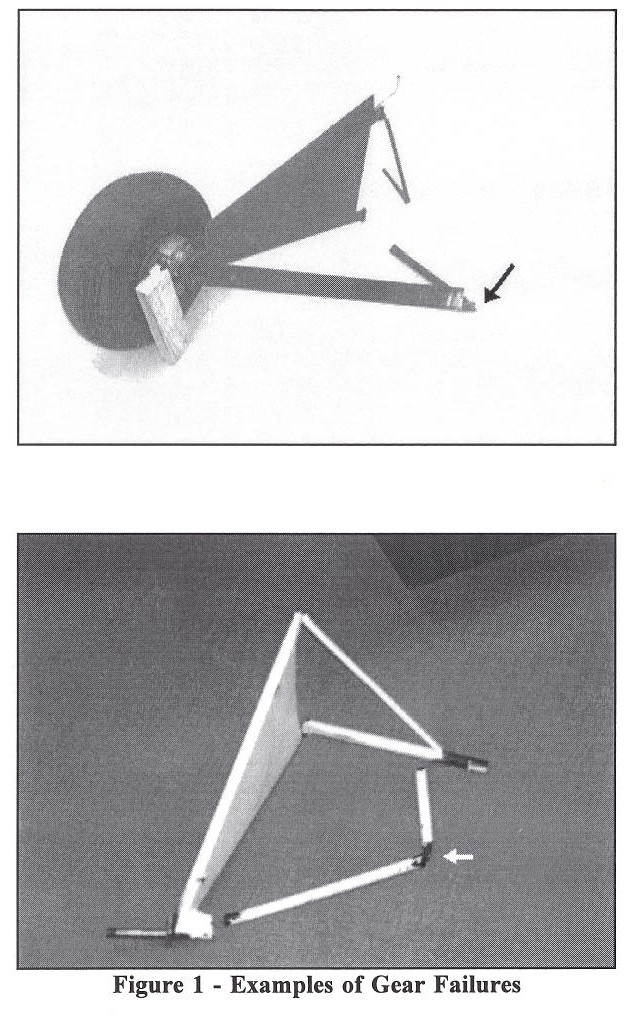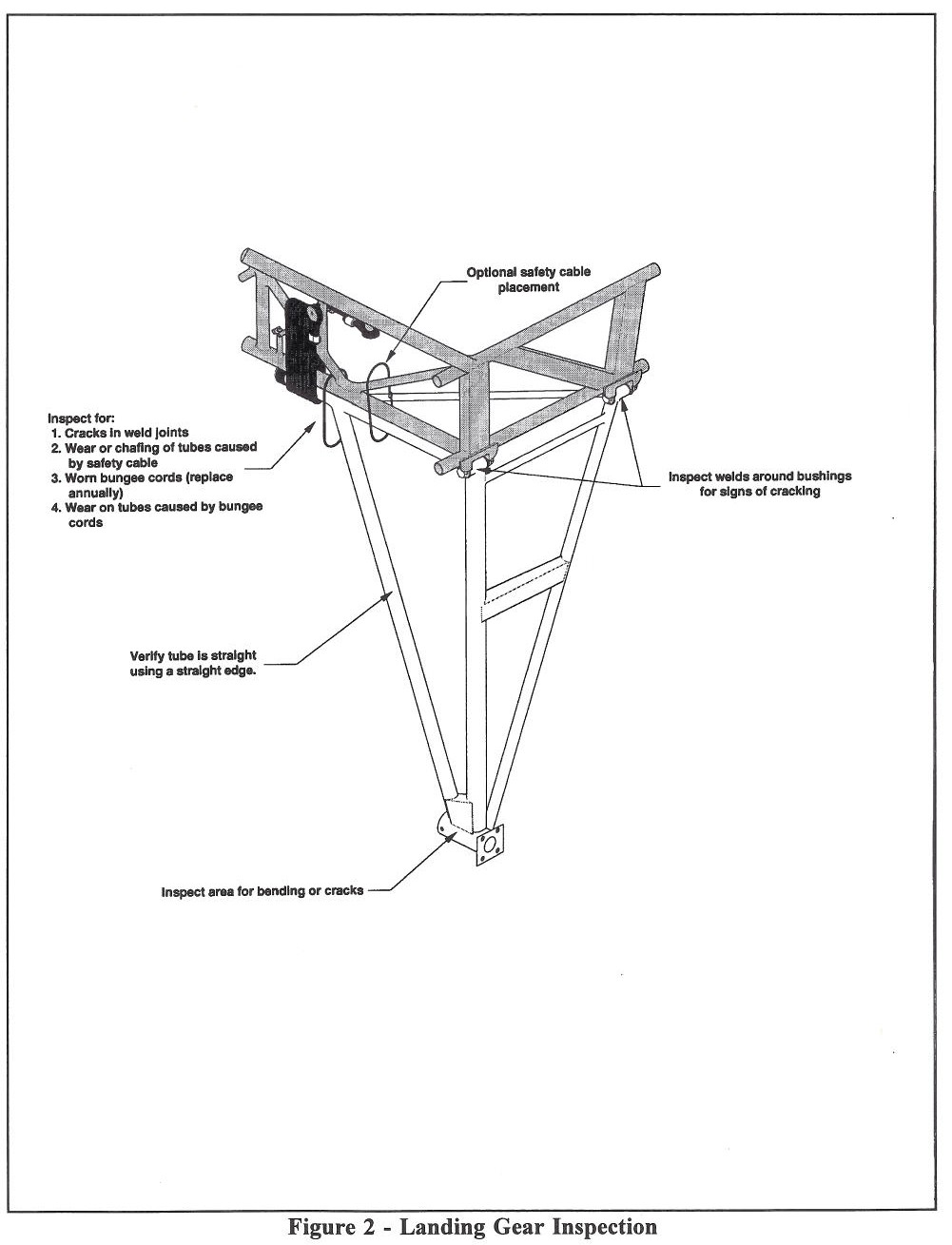SERVICE
LETTER #48
DATE:
August 22, 1995
SUBJECT:
Welded landing gear
APPLICABILITY:
All tail draggers with welded landing gears
COMPLIANCE:
As required
FROM:
SkyStar Aircraft Engineering Department
The
purpose of this service letter is to give you information regarding
the design and proper handling of the welded tube landing gear. It
has been our experience that incorrect handling of the aircraft on
the ground (especially during landing) and poor maintenance have led
to failures in a few of these gears in the field.
Figure
1 shows two examples of landing gear failures. The top photo shows a
gear which experienced a failure upon landing when the top
horizontal tube failed just outboard of the bungee cords. It is
believed that this particular gear, which had thousands of cycles on
it, began to experience fatigue around the bungee and a small crack
began to form. Moisture may have also been a factor as the fatigue
crack was exposed and susceptible to corrosion.
The
bottom photo is a gear which failed after the pilot landed the
aircraft while still in a crab (not advisable to do in a tail
dragger). As the side loads from the landing were imposed on the
gear, the brace buckled. It is possible that this brace was not
quite straight which would have significantly reduced its load
carrying capabilities. Previous hard (and misaligned) landings may
have also caused the tube to be less effective in withstanding the
imposed side loads. Damage like this may not be uncommon because we
have seen a tendency of new Kitfox™ pilots to try to align the
aircraft with the centerline of the runway on final approach using
the side of the cowl as a reference. The cowl, however, does not
extend straight forward from the side of the fuselage, and using it
as a reference will place the aircraft at an angle of up to 20° to
the runway.
Prior
to your next flight, we strongly recommend that you inspect your
landing gear carefully. Figure 2 gives some general guidelines for
this inspection. Begin by looking at all of the welded joints to
insure there are no signs of fatigue. Next, make certain all
structural members are straight, there are no dents in any members,
and the bungee cords and the safety cable are not wearing or chafing
on the gear members. The condition of the bungee should also be
checked, and it should be replaced annually.
You
should inspect the landing gear for both fatigue and bending during
each pre-flight inspection of the aircraft. Also, try to keep the
landing gear clean. Residue from the engine exhaust may tend to
build up on the gear, which can be corrosive to the gear itself. It
is also much easier to detect potential problems when inspecting a
clean gear.
With
the failure shown in the top photo of Figure 1, it may be seen that
the safety cable would not be effective in this type of failure.
Because of this, you may wish to relocate the safety cable to the
position shown in Figure 2. This would prevent the gear from
collapsing if the structural member were to fail, as well as in the
event of a broken bungee.
Finally,
you may wish to obtain a copy of How To Fly A Kitfox™ by
Edward S. Downs if you haven't already done so and review Chapter
13, Landing. Using the information presented in this chapter should
help you make landings which will reduce the likelihood of landing
gear problems. For those builders who are still working toward your
first flight in your aircraft, we encourage you to spend some time
becoming proficient in tailwheel aircraft, especially a Kitfox™,
if you aren't already prior to your first flight. SkyStar offers a
familiarization flight training program here at the factory which
will allow you to become comfortable with the aircraft. Call our
Customer Service department for more information about this program.

